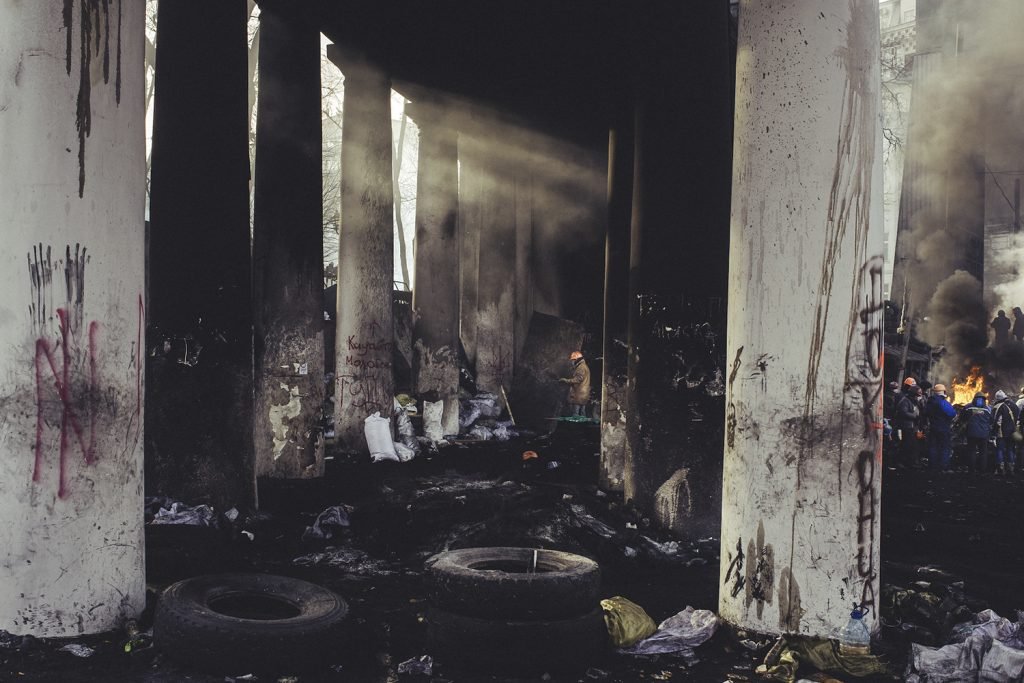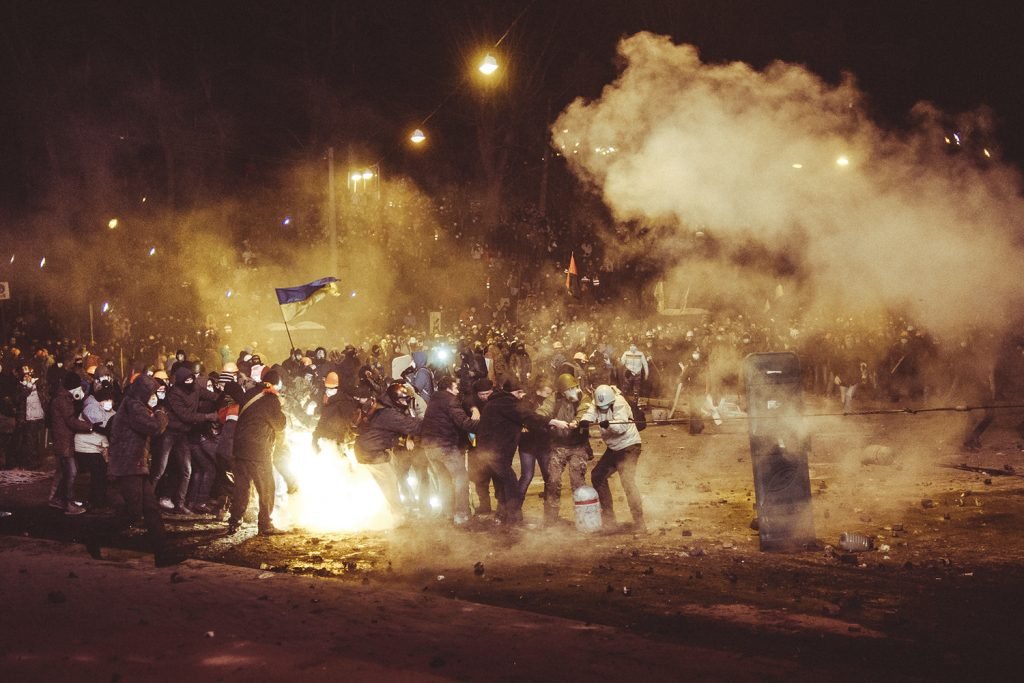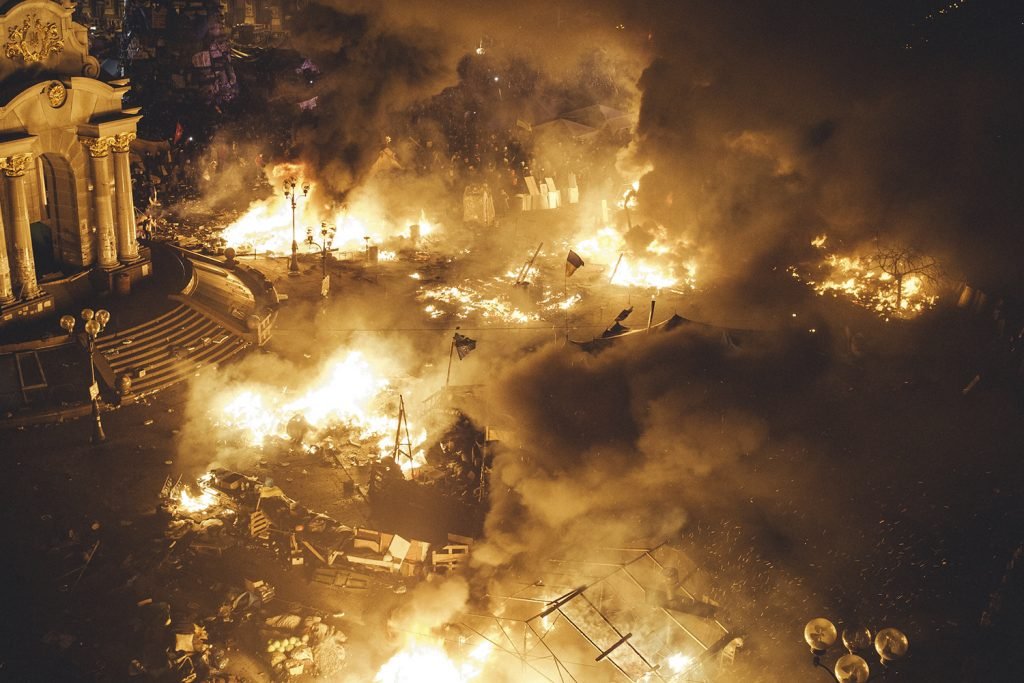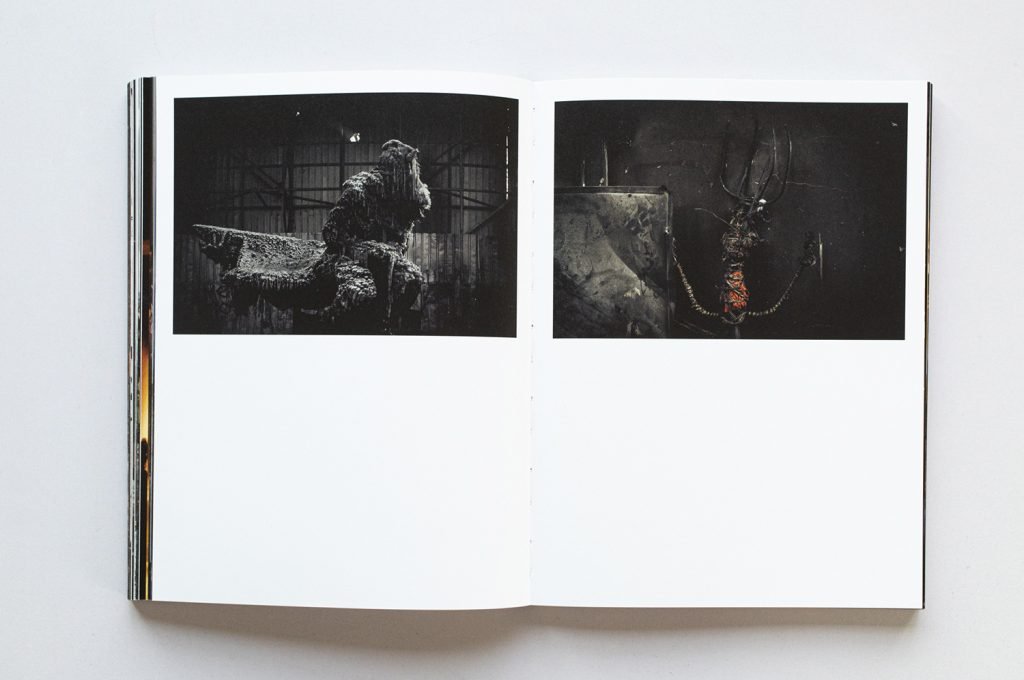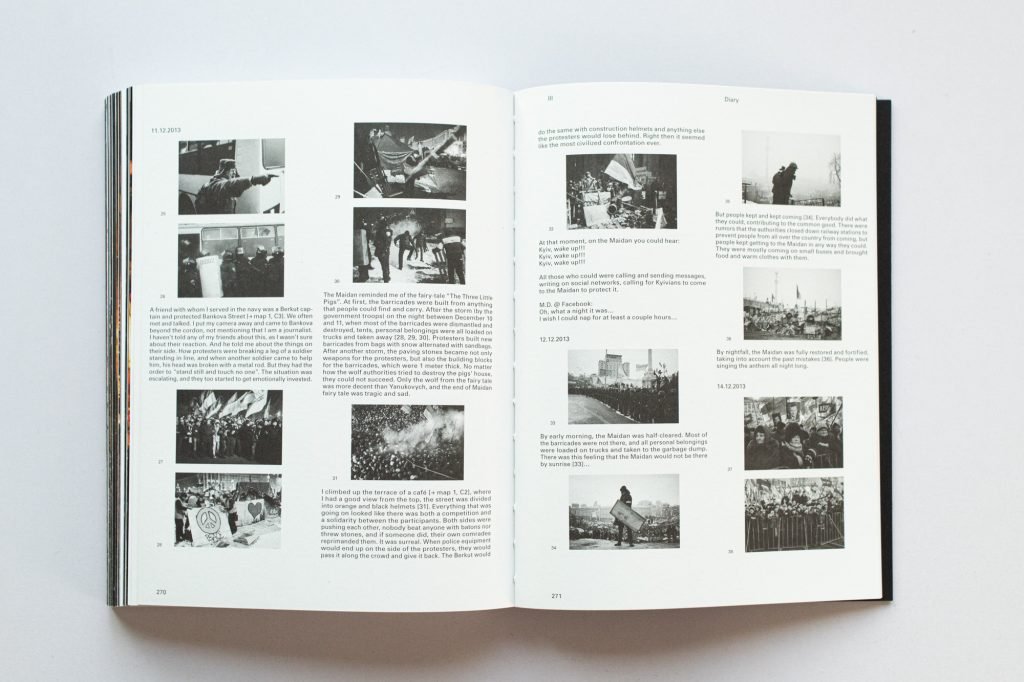“Winter 2014 changed Ukraine. Three months of bloody clashes, tears, fear, Molotov cocktails, burning car tires and deaths. Ukrainian revolution brought a new spirit, changed people and their minds, people became one organism that fights with great passion and intensity for its human rights. Project CULTURE OF CONFRONTATION was a turning point in my life. Maidan changed me and my perception of photography.
On the Maidan, at some point, the emotions for me took on an almost abstract, or universal character. The battles on the streets appeared almost unreal, as though occurring in some medieval fable or legend. Visually my photos broke away from the specific context that this was all happening in Ukraine, in my hometown. What I tried to capture was the more abstract, universal conflict that was playing out, between light and shadow, between the thick black smoke and whiteness of the February snow, and in some sense between good and evil, though it was often impossible to tell which side was which.
From the beginning the revolution felt like a performance, with scenes of carnage interweaving with incredible beauty. In that sense I think I did manage to remain objective, to remain impartial, while still feeling and expressing all the powerful emotions that were playing out. Through my photos I showed the scale of all that was happening, and in the process the line between reality and fiction sometimes became blurred. I would forget the place, time and the cause of what was happening, and felt transported to some phantasmagoric place that resembled the awful battles of past wars. In that sense, what happened on the Maidan became a symbol to me of opposites colliding.
The title CULTURE OF CONFRONTATION shouldn’t be taken too literally. Everything that happened in Ukraine, beginning with Maidan, is a confrontation of two different cultures. One culture tried to cling to old times, old ways of living. They were nostalgic for a past that meant a lot to them, to their parents and grandparents. Yet there was another culture that felt completely differently. They looked ahead to forging something new, a different country. By the word culture, I mean worldview, a term that encompasses a state of mind. On the Maidan there wasn’t merely a clash of two different generations. There were two layers of culture colliding on the territory of a single country. This confrontation is eternal. It transcends Ukraine, and it definitely transcends that city square where the revolution took place in the winter of 2013-2014.”
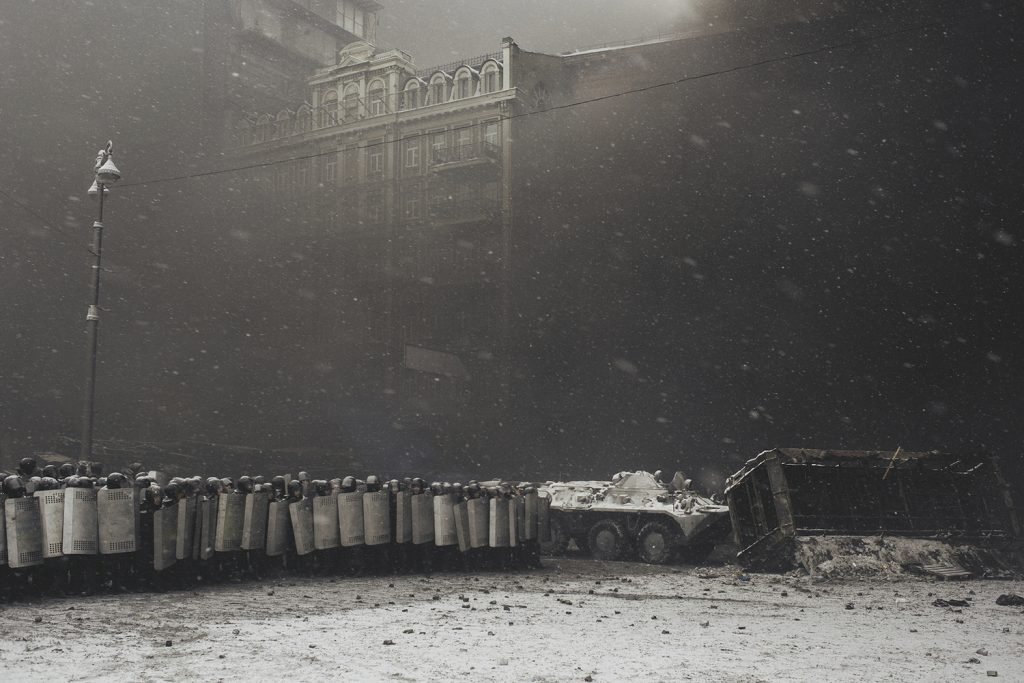
The book CULTURE OF CONFRONTATION speaks to the turning point in the history of Ukraine, that touched the whole world, the Ukrainian revolution of 2013-14.From the beginning the revolution felt like a performance, with scenes of carnage interweaving with incredible beauty. The battles on the streets appeared almost unreal, asthough occurring in some medieval fable or legend. So visually Maxim’s photos brokeaway from the specific context that this was all happening in Ukraine. What he tried tocapture was the more abstract, universal conflict that was playing out, between light andshadow, between the thick black smoke and whiteness of the February snow, and insome sense between good and evil. The book features an extensive archive of photographs shot in the middle of street clashes, artifacts and texts sharing the problematic discussions. An interview and the photographer’s diary are divided into 3 phases of events on the Maidan Square. It is also supplemented with a map and an events timeline to which are linked all the toponyms inthe book.In his book Maxim isn’t going to condemn or assess those terrible events, instead, he shows the confrontation between the two forces, two world views, two ways of development, and allows the viewers to find answers themselves.
See more >> Book
Maxim Dondyuk, 1983, Ukraine, is a photographer, visual artist and documentarist. He has exhibited internationally at the Musée d’Art Moderne (Paris), Somerset House (London), MAXXI National Museum of XXI Century Arts (Rome), Stadtisches Museum im Kornhouse (Germany), International Red Cross and Red Crescent Museum (Geneva), the Biennale of Photography in Bogota (Colombia), among others.
He is a finalist of the Prix Pictet ‘Disorder’ Photography Prize, International Photographer of the Year in Lucie Awards, finalist of the W. Eugene Smith Grant in Humanistic Photography, winner of the Ville de Perpignan Remi Ochlik Award, Magnum Photos competition ‘30 under 30’ for emerging documentary photographers, to name a few. Maxim has been awarded an artist residency Cité Internationale des Arts in Paris, France and received NOOR-Nikon Masterclass in Documentary Photography in Bucharest, Romania.
His works are in the permanent collections of the National Museum of Photography (Colombia), Benaki Museum (Greece), Museum of The History of Ukraine in World War II (Ukraine) and private collections. His projects were featured in GUP, British Journal of Photography, Rolling Stone, TIME, Newsweek, Der Spiegel, STERN, Polka, 6Mois, Paris Match, Le Monde, PDN, Bloomberg Businessweek, and others.
website – copyright © Maxim Dondyuk, all rights reserved




